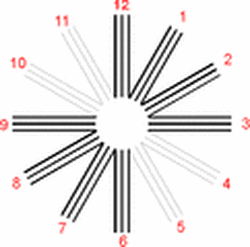There are three types of vision errors that can be corrected or reduced by refractive surgery
Myopia or Nearsightedness
Myopia Symptoms and Signs
Myopic people often have headaches or eyestrain, and might squint or feel fatigued when driving or playing sports. If you experience these symptoms while wearing your glasses or contact lenses, you may need a comprehensive eye examination.
What Causes Myopia?
Myopia occurs when the eyeball is slightly longer than usual from front to back. This causes light rays to focus at a point in front of the retina, rather than directly on its surface. Nearsightedness runs in families and usually appears in childhood. This vision problem may stabilize at a certain point, although sometimes it worsens with age. This is known as myopic creep
Hyperopia or Farsightedness
Hyperopia, or farsightedness, is a common vision problem, affecting about a fourth of the population. People with Hyperopia can see distant objects very well, but have difficulty seeing objects that are up close
Hyperopia Symptoms and Signs
Farsighted people sometimes have headaches or eyestrain, and may squint or feel fatigued when performing work at close range. If you get these symptoms while wearing your glasses or contact lenses, you may need an eye exam and a new prescription
What Causes Hyperopia?
This vision problem occurs when light rays entering the eye focus behind the retina, rather than directly on it. The eyeball of a farsighted person is shorter than normal. Many children are born with Hyperopia, and some of them "outgrow" it as the eyeball lengthens with normal growth. Astigmatism
Astigmatism
Normal Vision Astigmatic Vision
Astigmatism is the most common vision problem. Astigmatism may accompany nearsightedness or farsightedness. It's caused by an irregularly shaped cornea. There are two kinds of Astigmatism, lenticular and corneal. Astigmatism occurs when the surface of the cornea or of the lens is not perfectly smooth. If, for example, there is a small flat spot on your cornea the image in a certain direction on your retina will not be in perfect focus. If the figure on the right was constructed with all the radial lines of equal sharpness and contrast a person without Astigmatism would see all these radial lines as perfectly sharp and with the same contrast. The diagram on the right has been fudged to illustrate how it might appear to a person with Astigmatism.
Astigmatism Symptoms and Signs
If you have only a small amount of Astigmatism, you may not notice it or have just slightly blurred vision. Sometimes uncorrected Astigmatism can give you headaches or eyestrain, and distort or blur your vision at all distances. It's not only adults who can be Astigmatic. It has been found in a recent study that more than 28 percent of them had astigmatism. Children may be even more unaware of the condition than adults, and they are unlikely to complain of the blurred or distorted vision. Unfortunately, Astigmatism can affect their ability to see well in school and during sports, so it's important to have their eyes examined at regular intervals in order to detect any Astigmatism early on.
What Causes Astigmatism?
Astigmatism occurs when the cornea is shaped more like an oblong football than a spherical baseball, which is the normal shape. The oblong shape causes light rays to focus on two points in the back of your eye, rather than on just one. Many people are born with this oblong cornea, and the resulting vision problem may get worse over time.
Presbyopia
During middle age, usually beginning in the 40s, people experience blurred vision at near points, such as when reading, sewing or working at the computer. There's no getting around it; this happens to everyone at some point in life, even those who have never had a vision problem before.
Presbyopia Symptoms and Signs
When people develop Presbyopia, they find they need to hold books, magazines, newspapers, menus and other reading materials at arm's length in order to focus properly. When they perform near work, such as handwriting, they may have headaches or eyestrain, or feel fatigued.
What Causes Presbyopia?
Presbyopia is caused by an age-related process. This is different from Astigmatism,
nearsightedness and farsightedness, which are related to the shape of the eyeball and caused
by genetic factors, disease, or trauma. Presbyopia is generally believed to stem from a
gradual loss of flexibility in the natural lens inside your eye.
These age-related changes occur within the proteins in the lens, making the lens harder and
less elastic with the years. Age-related changes also take place in the muscle fibers
surrounding the lens. With less elasticity, the eye has a harder time focusing up close










